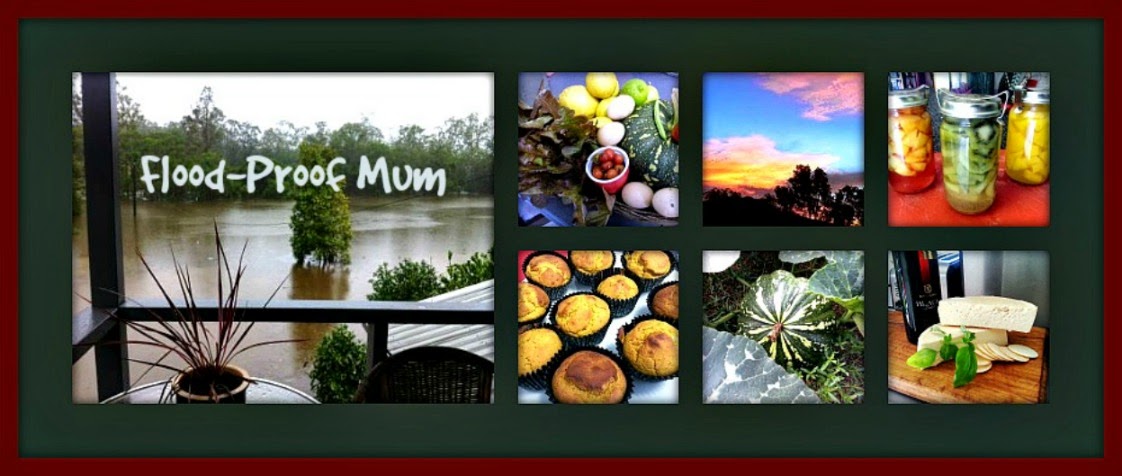A few weeks ago I attended an open day at a local property that the owners had developed over 18 years using permaculture principles. I have been slowly learning about this concept and it was a rare opportunity to see the principles put into practice, and the results that can be achieved with hard work...and time.
The first thing that struck me was the utilisation of space. Everywhere I looked there was something planted...with a purpose.
This particular farm uses cut off rainwater tanks for vegetable garden beds. These were filled with branches, cuttings and anything else that was around at the time, and then topped with layers of compost and soil from the property.
They are about thigh-high and there were half a dozen of them, strategically placed in a north-facing position to capture the sun, and utilising banana circles which you can just see on the right, for shade. These are a new concept for me. The bananas are grown in circles with compost (palms, cuttings etc) placed in the middle, to maximise production of fruit, but also to utilise waste water, because bananas are heavy feeders.
 |
| Image Source |
You can find out more about the banana circles here.
I was impressed with the use of grapevines as a natural canopy for the pergola.
All the pathways between the garden beds were planted with pinto peanut...a natural alternative to solid pathways.
Every garden bed was overflowing with nasturtiums., or herbs, or edible and medicinal roots.
Comfrey was growing around the base of every garden bed.
Behind this garden bed are masses of arrowroot, which is popular in permaculture gardens. They 'chop and drop' when it becomes overgrown, leaving it to compost and enrich the soil. Behind the arrowroot is a cow paddock.
This photograph shows the overall effect of the pinto peanut pathways, garden beds and banana circles.
This dam has a pump attached and supplies water to the gardens via an irrigation system.
The gardens to the left of this shed are what they call 'swales', another permaculture design feature which I am beginning to learn about.
They are not always the tidiest looking gardens, because they are heavily mulched to maximise water retention.
 |
| Image Source |
You can put branches and logs directly onto the swale, to break down over time.
This is a better shot of the swale, showing the front mound, built up with logs and organic matter.
To finish off, a shot of another dam as you drive into the property. It is situated on the lowest part of the land, once again to maximise water retention.
So, permaculture is a very interesting concept, and one which has been around for centuries and is gaining in popularity here. In my A-Z Simple Living series I covered the basic principles which I am learning about here. It is a big learning curve, but if I plan my garden correctly now, then I will reap the benefits in the future.
Do you plan your garden, or are you lucky enough to have it established now? Had you ever heard of a swale before?
















